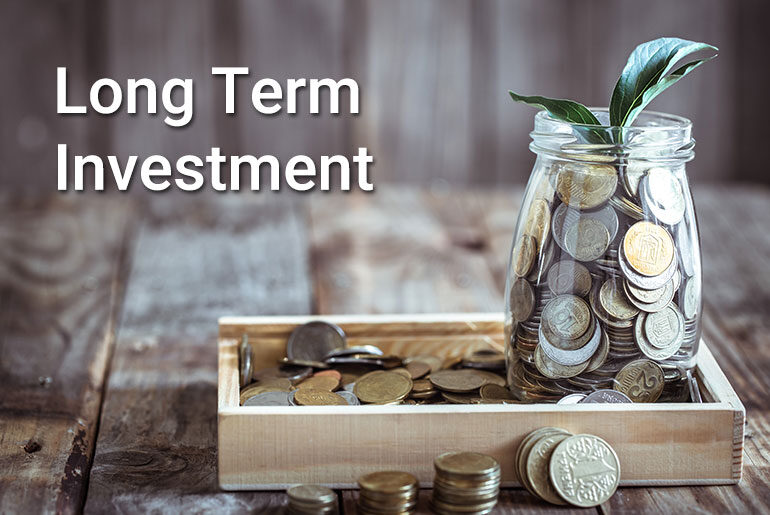There’s a high possibility that you came across this page while searching for the best long term investment stocks. Well, congratulations, you have come to the right place.
In about another 100 words, we will reveal the list of the best long term stocks to buy in India.
But only discovering the names of the best long term stocks will do you no good if you do not know the secret of creating wealth through these stocks.
Yes. Contrary to millions of ‘getting-you-rich’ books, market experts and finance gurus, there are only two secrets to infinite wealth creation.
These secrets are followed by some of the greatest investors of our times. From Warren Buffett, Benjamin Graham, Peter Lynch to our very own Rakesh Jhunjhunwala and Raamdeo Agrawal.
These two secrets revolve around the 3 most powerful words in the stock market – Long Term Investing.
But before we reveal anything further, as promised, for the busy readers getting late for office and okay not knowing the greatest investment secrets, here’s the list of the 10 best long term investment stocks to buy in India. Enjoy!
| Stock | Returns* in % | Market Capitalisation (in Cr.) |
|---|---|---|
| Bajaj Finance ltd. | 141.23 | 3,01,224 |
| Coforge ltd. | 93.18 | 17,067 |
| Infosys ltd. | 89.43 | 5,86,204 |
| Jubilant Foodworks ltd. | 83.80 | 38,620 |
| Tata Consultancy Services ltd. | 59.32 | 1,191,926 |
| HDFC Bank ltd. | 49.65 | 7,99,408 |
| Godrej Consumer Products ltd. | 44.59 | 78,690 |
| Crisil ltd. | 34.49 | 14,155 |
| ITC ltd. | 23.73 | 2,49,178 |
| Hindustan Unilever ltd. | 17.84 | 5,70,730 |
* Returns after our recommendation on 6th May 2020 to 7th Jan 2021
Now for our disciplined readers, the two secrets for infinite wealth creation are:
- Selecting top-quality stocks
- Staying invested for the long term.
Aren’t these secrets quite obvious? Shouldn’t all investors inherently follow them? Unfortunately, while obvious, 99% of investors fail to follow these basic long term investing principles. These ‘investors’ then wonder why they did not create infinite wealth!
But we empathise with you. While common sense, discovering the best long term investment stocks is no easy task. It takes years of hard work, perseverance and a keen eye to discover the best long term stocks amidst the 4,500+ stocks in the market.
StockBasket, India’s first long term buy and hold investment platform, runs more than 2 crore data points every day to discover the best long term stocks.
We have already revealed the 10 best long term investment stocks to buy in India. So, you’ve already won half the battle.
To win the other half, you need to commit to long term investing. But before making a long term commitment, you first need to understand the Power of Compounding.
Power of compounding is the single reason why an ordinary boy from Omaha is amongst the richest men on the planet!
Did you know that Warren Buffett’s annual portfolio return is only 22%? On the contrary, Jim Simons has generated an annual return of 66%!
But then why is Warren Buffett known as the greatest investor of all times while Jim Simons remains unknown?
If returns are the only thing that matters, then why is Jim Simons not the richest man on the planet having beaten Warren Buffett’s portfolio returns by a whopping 44%!
You’d be surprised to know that returns are not the most crucial component of long term wealth creation.
The secret of long term wealth creation is the power of compounding. Warren Buffett selects great quality fundamentally strong stocks. No arguments here. But that is not the sole reason for his abundant wealth.
“Warren Buffett’s strength lies in stock selection but his secret is the time! “
Warren Buffett started investing when he was 9 years old. He is 90 years old now. His investments have been compounding for almost a quarter of a century. On the other hand, Jim Simons started investing in good quality stocks in his late 50s.
Simply put, even a 44% higher return couldn’t cover up the gains accumulated due to the Power of Compounding.
So, there you go. Select fundamentally strong stocks and stay invested for the long term and you too shall create infinite wealth.
But the next logical question is, ‘Which among these best long term stocks should you buy first? It might be possible that you do not have the funds to buy all 10 long term investment stocks at one go.
So. how should you go about investing in these best long term stocks?
watch our video to learn about long term investment strategy
There are two ways to invest in our shortlisted long term investment stocks. Either you invest on your own or through StockBasket.
When you invest on your own, you might buy some stocks and miss out on others. But when you invest through StockBasket, you get to invest in all these stocks proportionally. So, you never miss the wealth-creating potential of any of these stocks.
You might think, ‘What is StockBasket?’.
StockBasket is the smartest way of investing in the stock market. StockBasket is India’s first long term investing platform.
When you invest on your own, you might not have the time or resources to constantly track all individual stocks. StockBasket, courtesy of its 60+ intelligent parameters monitors the quality of stocks and only includes the best stocks in each basket.
Who Should Invest in StockBasket?
StockBasket is created with the principle that every investor whether big or small, should have access to wealth creation via the stock market.
You should invest in StockBasket if you are:
- A long-term investor, who knows wealth can only be created by staying invested in quality stocks for a long period.
- A student, who wants to make the ‘perfect’ start to stock market investing.
- A salaried professional wanting to achieve your financial goals.
- A seasoned investor, who has created some wealth in equity markets and understands the nitty-gritty of the stock market.
- A senior management professional, who does not have the time to track markets but wants to create wealth in the stock market.
Why should you invest through StockBasket?
You should invest in StockBasket as it follows the two most important fundamentals of long term wealth creation – Superior stock selection & investing in them for the long term.
StockBasket has SEBI registered expert-curated ready-made baskets of stocks, suited to each and every financial goal. Each basket contains the absolute best long term stocks to buy in India.
Our confidence in our research is so strong that we offer a unique ‘5-year fee refund guarantee‘. So, if you don’t make money in any of our recommended baskets in 5 years, then the entire subscription fees collected from you over these five years, will be refunded.
StockBasket investments start from as low as Rs 3,500 to Rs. 15,00,000, and it takes only 5 minutes to open a StockBasket account.
One of my favourite quotes is, “Investing should be more like watching paint dry or watching grass grow. If you want excitement, take $800 and go to Las Vegas.”
As you watch the paint dry or grass grow, these articles will make up for an excellent company!
I’ll be back with many more such ‘interesting’ articles. For now, Ciao!





